Evaluation of durum wheat experimental lines under different climate and water regime conditions of Iran

Authors:
In the Mediterranean region, grain yield of durum wheat is frequently limited by both high temperature and drought during grain filling. Atotal of six sets of paired trials, including 18 durum experimental lines and two durum and bread wheat landraces, were conducted in the field under three moderate (no stress), warm (stress) and cold (stress) climate conditions and two different water regimes [i.e. rain-fed (terminal stress) and two supplemental irrigations (no stress)] conditions for two cropping seasons (2005-06 and 2006-07) in Iran. Several stress indices (i.e. drought, heat, and cold) obtained from grain yield data under different climate and water regime conditions were used to analyse relationships between genotypic grain yield data of 20 genotypes and their tolerance to different stresses. The additive main effect and multiplicative interaction (AMMI) analysis was also used to capture a large portion of the genotype by environment (GE) interaction sum of squares and to separate main and interaction effects. The combined ANOVA revealed significant differences between locations, water regimes (rain-fed v. irrigation) and their effects in discriminating among the genotypes. The genotypic yields in both rain-fed and irrigated conditions were positively associated (P < 0.01) at the moderate and warm locations; but were adversely correlated (P < 0.05) at cold locations, suggesting that a high-yield potential under two supplemental irrigations does not necessarily result in improved yield under rain-fed conditions. The results verified that grain yield increased in response to irrigation, but some genotypes were more sensitive to environmental differences depending on year and location. Relative reduction of grain yield due to drought was a promising trait to improve drought tolerance indirectly in warm and moderate locations. Estimates of broad-sense heritability also varied with climate conditions. Based on principal component analysis (PCA), the different stress indices tended to discriminate genotypes in dissimilar fashions. The results also indicate that it was possible to identify superior genotypes based on single and multiple abiotic stresses (drought, heat and cold). The genotypes G4 and G5 had general tolerance to the three abiotic stresses while the G19 and G15 were tolerant to drought and cold stresses and G18 and G17 were tolerant to heat stress. According to AMMI biplot analysis, the genotypes G4 and G9 were the best in terms of both mean yield and minimal GE interaction, indicating that selecting for improved yield may increase yield in a wide range of environments.
